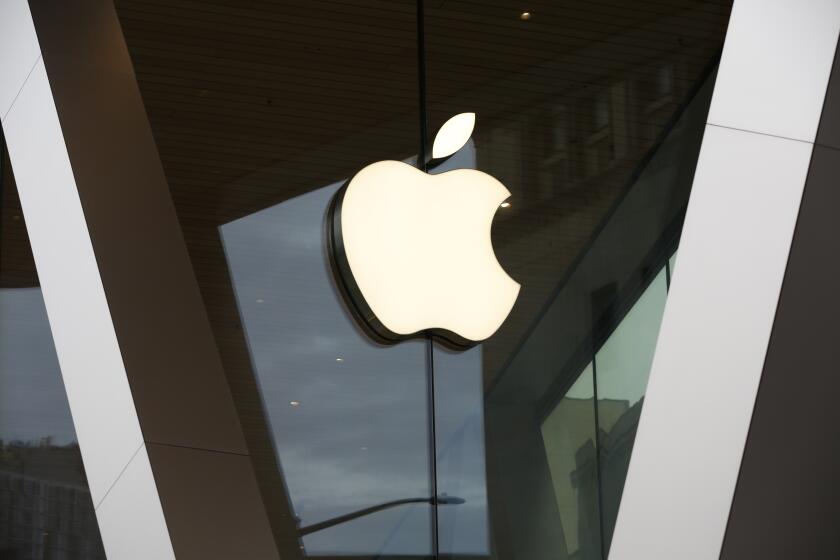‘Terminator: Dark Fate’: What makes a franchise live or die?
- Share via
On the surface, “Terminator: Dark Fate” and “Joker” share basic similarities: Both are R-rated movies based on well-known characters that appeal to predominantly male audiences. Further, the films got virtually identical Rotten Tomatoes scores.
But the box office results could not be more different.
The Warner Bros.-DC film “Joker,” made for $60 million, became a global phenomenon, grossing nearly $940 million worldwide so far. The latest “Terminator” movie, which cost at least $185 million to produce, landed with a thud, grossing $29 million domestically, well below studio expectations. It did little better internationally, collecting a modest $28 million in China.
Major movie studios have been under pressure to mine their film libraries for franchises that will help them compete at the box office. But “Terminator: Dark Fate,” produced by David Ellison’s Skydance Media and co-financed by Viacom Inc.’s Paramount Pictures and Walt Disney Co.-owned 20th Century Fox, shows what can happen when a studio bets big on a piece of intellectual property that has lost its cachet with audiences, analysts said.
James Cameron’s 1984 hit “The Terminator” and its early ’90s sequel “Terminator 2: Judgment Day” are landmarks of sci-fi action cinema. But like many other long-running studio properties, “Terminator” faced a key test this year: Is it a true franchise that audiences want to revisit, or did it run its course decades ago? Beyond that, could its producers make something old seem new and relevant for younger audiences? The answer to both, it appears, was a resounding no.
“In the case of ‘Terminator,’ its heyday was 1991, and that was a long time ago,” said Jeff Bock, a box office analyst at Exhibitor Relations. “Unfortunately this is everything we have seen before, they’re not bringing anything new to the table.”
Skydance, Paramount and Disney declined to comment.
It’s a challenge that every studio is facing as the audience’s bar for quality and newness rises amid a growing number of entertainment options. In the last several months, audiences rejected sequels and reboots, including Lionsgate and Millennium’s “Rambo: Last Blood,” Disney’s “Maleficent: Mistress of Evil” and Sony Pictures’ “Men In Black: International.” But they’ve turned out in droves for the latest installments in franchises such as “John Wick” and “Toy Story.”
None surprised the industry more than “Joker.” Ahead of “Joker’s” release, even Warner Bros. executives were unsure that the movie would succeed, given its pitch-black tone. But the movie’s depiction of the Batman villain’s origin resonated with audiences so much that protesters in Hong Kong have donned clown makeup similar to that worn by Joaquin Phoenix’s Arthur Fleck in the movie.
“‘Joker’ managed to be sold in a way that made it feel original,” said one producer not connected to either film. “‘Terminator’ did not clear the audience threshold.”
The “Terminator” flop is the latest blow for Santa Monica-based Skydance Media, the studio Ellison launched in 2006. Ellison, the son of Oracle Corp. billionaire Larry Ellison and the brother of Annapurna Pictures founder Megan Ellison, specializes in big-budget science fiction action movies meant to attract global audiences. David Ellison, 36, is known for having more commercial tastes than his sister, whose prestige-focused studio has struggled. Skydance’s best-known hits include the recent “Star Trek” and “Mission: Impossible” movies as well as “World War Z.”
But the company has also produced some high-profile misfires. In October, Skydance released “Gemini Man,” a $138-million film starring Will Smith playing an aging hit man who faces off with his younger self. The Ang Lee-directed movie is expected to lose tens of millions of dollars after its disappointing box office run. Skydance has also produced lackluster offerings including “Geostorm” and “Life.”
The studio’s decision-making was questioned earlier this year when it hired ex-Pixar executive John Lasseter to head its animation division after he left Disney following allegations of inappropriate treatment of employees. Emma Thompson exited the Skydance animated movie “Luck” in protest. Skydance defended the decision, saying Lasseter had apologized for his behavior.
Still, analysts said Skydance and Paramount should catch a break when they release “Top Gun: Maverick” next summer. Sky-high hopes for the Tom Cruise action movie soared after the movie’s trailer debuted online in June to a rousing reception on social media.
Plus, insiders say the company is in better financial shape than the box office returns would suggest because it has diversified in businesses including television production and video games. But the failure of “Terminator” still stings.
“It’s a tough road for Skydance and Paramount,” Bock said. “‘Top Gun’ can’t get here fast enough.”
“Terminator: Dark Fate” suffered from a series of problems, even before it got off the ground. After the massive success of “Terminator 2,” a spate of subpar sequels turned many people off the franchise, analysts said, and it ultimately may have been too difficult to win back fans. Ellison, who bought the rights from his sister Megan Ellison after she paid $20 million for them in 2011, tried to start a trilogy with “Terminator: Genisys” in 2015, only to scrap sequel plans when that movie failed amid dismal reviews.
The studio tried to salvage the series. Cameron and Skydance made “Dark Fate” a direct sequel to “T2,” eschewing the timelines of the other films. They also brought back Linda Hamilton, 63, to play Sarah Connor alongside Arnold Schwarzenegger, 72. Yet Cameron, who produced the movie but did not direct, reportedly clashed with director Tim Miller and made significant changes in the editing process. Asked by movie website Cinemablend if there were disagreements during editing, Cameron said there were many.
“And the blood is still being scrubbed off the walls from those creative battles,” Cameron told the publication. “This is a film that was forged in fire.”
The deadliest blow, perhaps, was saddling the movie with a $185-million production budget. Even though financing was split among four companies (Skydance, Paramount and Fox each put in 30%, while China’s Tencent contributed the remainder), the costs mean the movie will have to do blockbuster business to break even, said Eric Handler, an entertainment industry analyst at MKM Partners.
In contrast, The lower budget for “Joker” took some of the pressure off. Even so, Warner Bros. was nervous enough to enlist co-financiers Bron Studios and Village Roadshow Pictures to co-finance the movie. Did Warner Bros. leave profits on the table by bringing on financial partners? Maybe, but it could have easily gone the other way.
“I think the [‘Terminator’] producers green-lit a movie with a budget that was way out of whack for what a movie like this was going to do,” Handler said. “You’ve got a case of an aging franchise with aging actors that are far less relevant than they used to be.”
More to Read
Inside the business of entertainment
The Wide Shot brings you news, analysis and insights on everything from streaming wars to production — and what it all means for the future.
You may occasionally receive promotional content from the Los Angeles Times.











